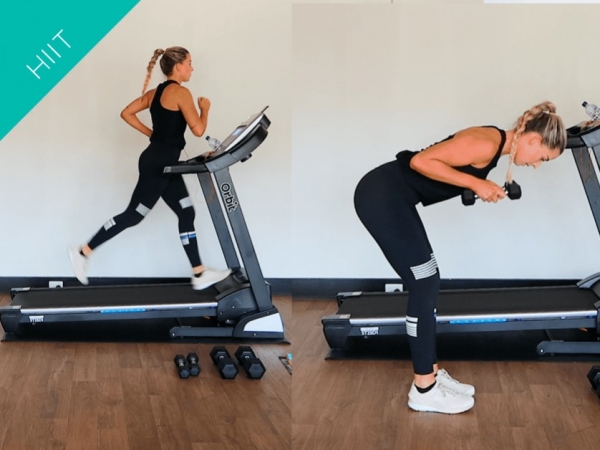When it comes to design and fashion, they usually say ‘Less is More’ but could this pertain to your daily exercise regime? For some reason, it’s been ingrained in our minds that in order to work off that red velvet cupcake you have to spend hours on the treadmill.
Times are changing and exciting fitness trends are coming to the forefront. Gone are the days where you had to sacrifice a quarter of your day to stay in shape. In today’s society, it’s very much about ‘quick’ fixes and fast tracks on the way to success.
Tabata training routines originated from the Japanese scientist, Dr. Izumi Tabata and his colleagues testing the benefits of High-Intensity Interval Training vs that of ultra-high-intensity training, otherwise referred to as Tabata. The study required Tabata and his team to evaluate two groups; one focused on moderate-intensity exercises for one hour, five days per week for a total of six weeks. The other group practised the ‘Tabata’ styled exercises which consist of eight intervals of exercises, 20-seconds-on and 10-seconds resting in between. This session only takes 4-minutes in total but is pushing your body to its absolute limit. Dr Tabata published his findings on interval training in his 1996 study in the journal Medicine & Science in Sports & Exercise.
“The scientists’ results concluded that the athletes who performed high-intensity training saw increases in aerobic and anaerobic system capacities, whereas the moderate-intensity group did not improve anaerobic performance”.
The Tabata Workout Program
Even though you could alter these exercises to Tabata training for beginners, it’s more aimed at the intermediate and advanced exercise junkie. This is purely because more experienced trainers would understand the limits of their bodies and already have a good form from which they can increase their tempo and the intensity of the exercises.
The trendy Tabata workout as we know it today consists of a four-minute workout where eight sets of exercises are performed. Workout hard for 20 seconds at a time, then rest for 10 seconds after which you repeat the process eight times. Choose any exercise that you feel comfortable with or body parts that you want to work on, such as squats, pushups, jump rope, kettlebells etc.
The Pros and Cons of Tabata Training
As SparkPeople explains; “Tabata training promises big results in little time, but true Tabata training requires participants to push themselves to the max – and that level of intensity is definitely not for everyone”.
Pros of Tabata
- Helps with weight loss
- Quick exercises
- Improves both aerobic and anaerobic fitness
- Boost your metabolism and heart rate
- Metabolism remains high for longer
- More fat burning
- Increases cardiovascular health
Cons of Tabata
- Not suitable for all fitness levels
- Not suitable for heart patients
- Should be avoided by people suffering from high blood pressure
- High risk of injuries if not performed correctly
- Consult a doctor before starting this fitness regime
- Very challenging
As you might realize, Tabata doesn’t really have as many cons, but more cautions. It’s more about understanding the technique, your body’s capabilities and whether this level of intensity would pose a risk for your health.
Does it really work?
Studies show that this exercise regime is not just a fad or way of fooling your body into fitness. “A 2007 study in the Journal of Applied Physiology found that seven sessions of high-intensity interval training over two weeks resulted in marked increases in the whole body and skeletal muscle capacity for fatty acid oxidation during exercise in moderately to active women”.
What might seem confusing is that Tabata is in direct contrast with the age-old belief that training programs should be performed at a lower intensity for a longer amount of time in order to burn more fat. With high-intensity training, however, you will not only increase your cardiovascular capacity but it burns more calories per minute than lower intensity workouts. Because of the high-intensity nature of the routine, Tabata falls in the same category as other HIIT exercises such as bootcamp, Functional Training, spinning and kickboxing – expect that it shows the most improvement.
Tabata training really is the real deal, but it’s all about understanding your body and its limits. As you will see, most reviewers explain the extreme challenge of this workout. Since it was designed to boost the performance of professional athletes it would be advised to consult with your doctor and pass a physical exam before embarking on this journey.
Last updated on 12/11/2021


